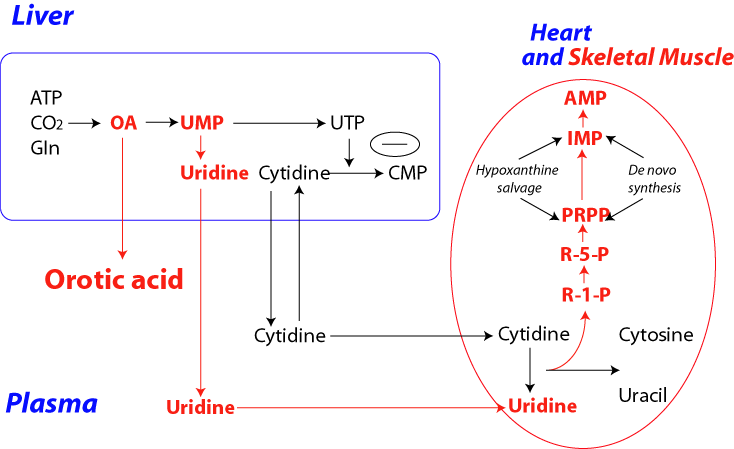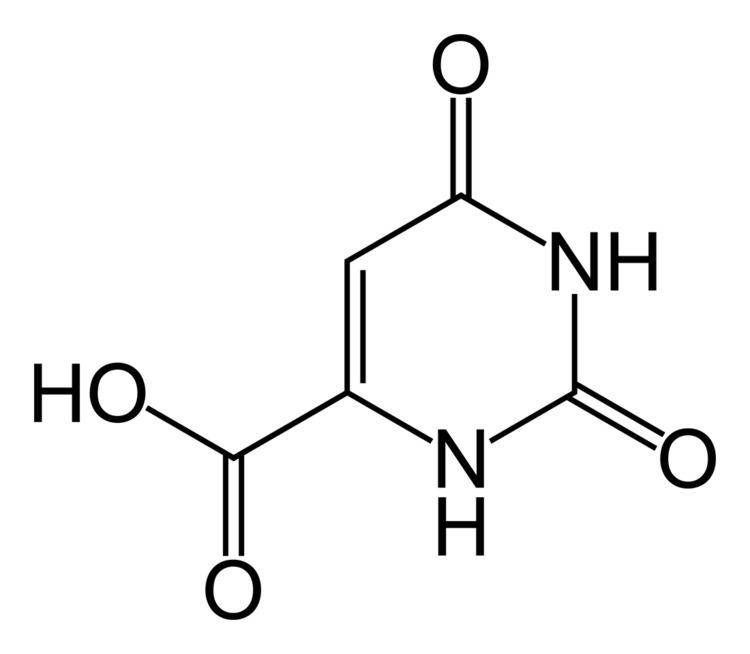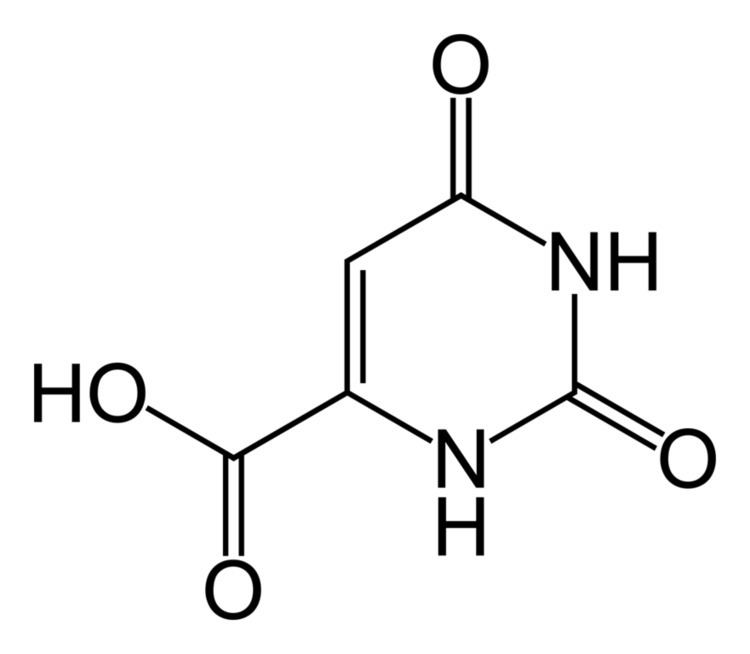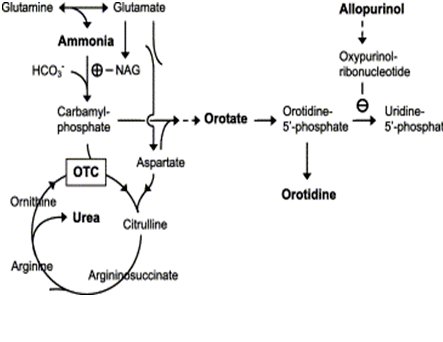ATC code none PubChem CID 967 DrugBank DB02262 Molar mass 156.1 g/mol | CAS Number 65-86-1 IUPHAR/BPS 4690 Formula C5H4N2O4 CAS ID 65-86-1 | |
 | ||
AHFS/Drugs.com International Drug Names | ||
What is orotic aciduria
Orotic acid is a heterocyclic compound and an acid; it is also known as pyrimidinecarboxylic acid. Historically it was believed to be part of the vitamin B complex and was called vitamin B13, but it is now known that it is not a vitamin.
Contents

The compound is manufactured in the body via a mitochondrial enzyme, dihydroorotate dehydrogenase. or a cytoplasmic enzyme of pyrimidine synthesis pathway. It is sometimes used as a mineral carrier in some dietary supplements (to increase their bioavailability), most commonly for lithium orotate.

Synthesis

Dihydroorotate is synthesized to orotic acid by the enzyme dihydroorotate dehydrogenase, where it later combines with phosphoribosyl pyrophosphate (PRPP) to form orotidine-5'-monophosphate (OMP). A distinguishing characteristic of pyrimidine synthesis is that the pyrimidine ring is fully synthesized before being attached to the ribose sugar, whereas purine synthesis happens by building the base directly on the sugar.
Safety
Orotic acid can be mutagenic in mammalian somatic cells. It is also mutagenic for bacteria and yeast.
Pathology

A buildup of orotic acid can lead to orotic aciduria and acidemia. It may be a symptom of an increased ammonia load due to a metabolic disorder, such as a urea cycle disorder.

In ornithine transcarbamoylase deficiency, an X-linked inherited and the most common urea cycle disorder, excess carbamoyl phosphate is converted into orotic acid. This leads to an increased serum ammonia level, increased serum and urinary orotic acid levels and a decreased serum blood urea nitrogen level. This also leads to an increased urinary orotic acid excretion, because the orotic acid is not being properly utilized and must be eliminated. The hyperammonemia depletes alpha-ketoglutarate leading to the inhibition of the tricarboxylic acid cycle (TCA) decreasing adenosine triphosphate (ATP) production.
Orotic aciduria is a cause of megaloblastic anaemia.


